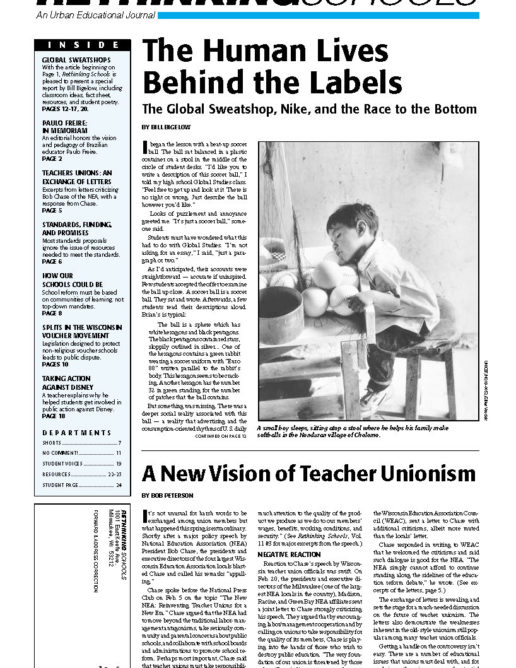Preview of Article:
We Need a New Vision of Teacher Unionism
It's not unusual for harsh words to be exchanged among union members but what happened this spring is extraordinary.
Reaction to Chase’s speech by Wisconsin teacher union officials was swift. On Feb. 20, the presidents and executive directors of the Milwaukee (one of the largest NEA locals in the country), Madison, Racine, and Green Bay NEA affiliates sent a joint letter to Chase strongly criticizing his speech. They argued that by encouraging labor/management cooperation and by calling on unions to take responsibility for the quality of its members, Chase is playing into the hands of those who wish to destroy public education. “The very foundation of our union is threatened by those who will capitalize on your remarks as an expression of weakness,” they wrote.
About two weeks later, Terry Craney, president of the statewide NEA affiliate, the Wisconsin Education Association Council (WEAC), sent a letter to Chase with additional criticisms, albeit more muted than the locals’ letter.
Chase responded in writing to WEAC that he welcomed the criticisms and said such dialogue is good for the NEA. “The NEA simply cannot afford to continue standing along the sidelines of the education reform debate,” he wrote. (Click here to see excerpts from the letters from the union leaders, as well as Chase’s response.)
The exchange of letters is revealing and sets the stage for a much-needed discussion on the future of teacher unionism. The letters also demonstrate the weaknesses inherent in the old-style unionism still popular among many teacher union officials.</p

